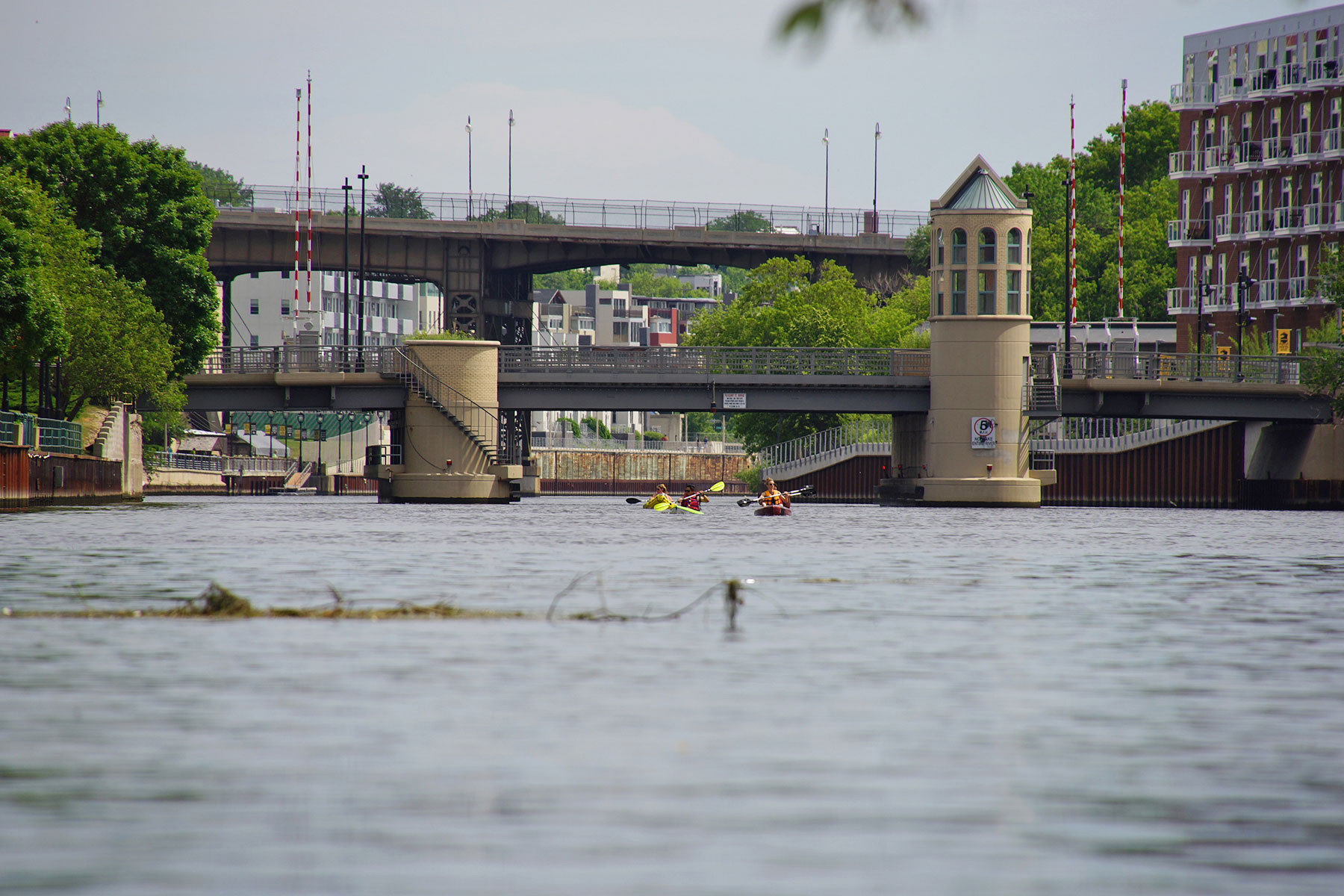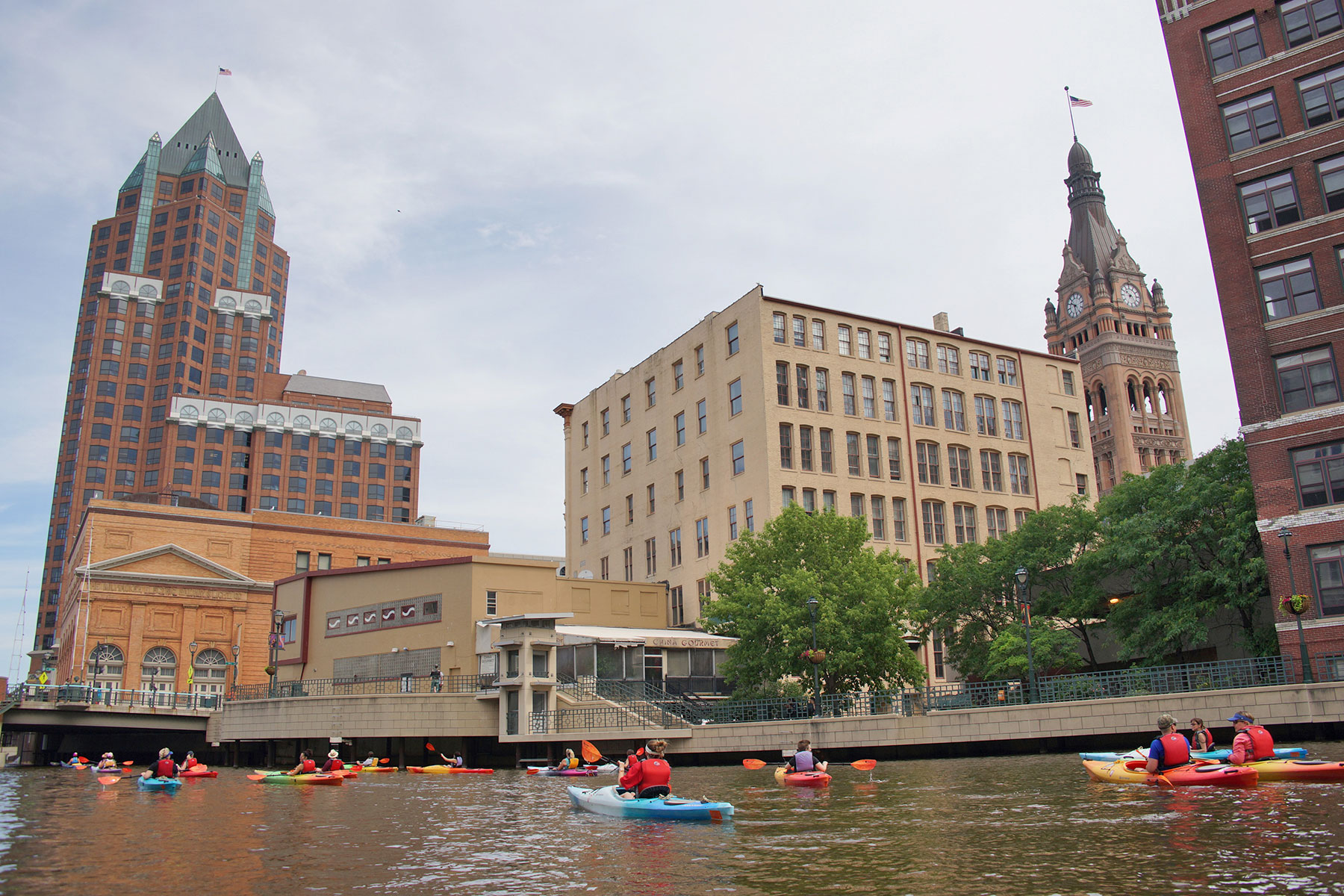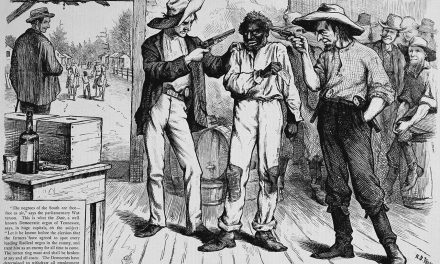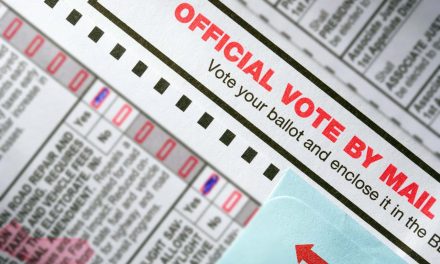
Federal officials said work to restore polluted sites on the Great Lakes, including in Wisconsin, will wrap up faster than expected after a $1 billion boost from the bipartisan infrastructure plan.
President Joe Biden and the U.S. Environmental Protection Agency announced on February 17 that the funding will allow regulators to clean up 22 sites contaminated by historic industrial practices within the next decade.
The U.S. and Canada designated 43 sites, known as Areas of Concern, or AOCs, among the most polluted across the Great Lakes in 1987.
“This $1 billion investment is going to turbocharge the cleanup and monitoring of sites across eight states in the Great Lakes Basin,” Mitch Landrieu, senior advisor to President Biden, said in a virtual White House press conference on February 18.
The infusion of federal funds means restoration activities at four of five sites listed in Wisconsin will wrap up by 2030. State and federal regulators declared the Lower Menominee River restored in 2020.
The four sites are the St. Louis River on Lake Superior, Lower Green Bay and Fox River, Sheboygan River, and the Milwaukee River Estuary on Lake Michigan.
The $1 billion is on top of annual funding provided to the Great Lakes Restoration Initiative. In 2020, Congress authorized funding for the Great Lakes cleanup program to grow from $300 million to $475 million each year by 2026.
The EPA anticipates it will cost nearly $2 billion to wrap up work at all sites, according to Debra Shore, the agency’s regional administrator for Region 5, which covers Wisconsin.
“Several of the big complex areas of concern, such as Milwaukee and Detroit, will cost well over $100 million each,” Shore said.
The Milwaukee River and other sites in Wisconsin have large amounts of contaminated sediments that need to be removed. Industrial practices and lacking wastewater treatment prior to the passage of the Clean Water Act in 1972 polluted waterfront areas with debris, oil, grease and waste.
Cheryl Nenn, with Milwaukee Riverkeeper, said the funding represents a generational opportunity to clean up legacy pollution.
“That will benefit aquatic life and people as well,” Nenn said. “I think we really deserve clean water where people can safely swim and fish and deserve clean water that people can drink.”
The Great Lakes provide drinking water to 40 million people. A 2020 analysis found they support more than 1.3 million jobs that generate $82 billion in wages each year. The Great Lakes cleanup program has received bipartisan support from Congressional lawmakers, including U.S. Senator Tammy Baldwin.
“This investment will improve the health and well-being of Wisconsin families and boost jobs, tourism and recreation across the state,” Baldwin said.
While work on the Milwaukee River is set to wrap up by 2030, Shore said regulators will continue to monitor the health of fish populations for about five years after that. She said about $200 million has already been spent to clean up the St. Louis River, the second-largest polluted site on the U.S. side of the Great Lakes. Agencies in Wisconsin and Minnesota are overseeing restoration work there. That includes the removal of contaminated sediments at the U.S. Steel site on the Spirit Lake area of the river.
Additional federal investment is a welcome relief as competition for funding has increased to wrap up work on polluted sites, said Barb Huberty, the river’s AOC coordinator with the Minnesota Pollution Control Agency.
Danielle Kaeding
Lee Matz















